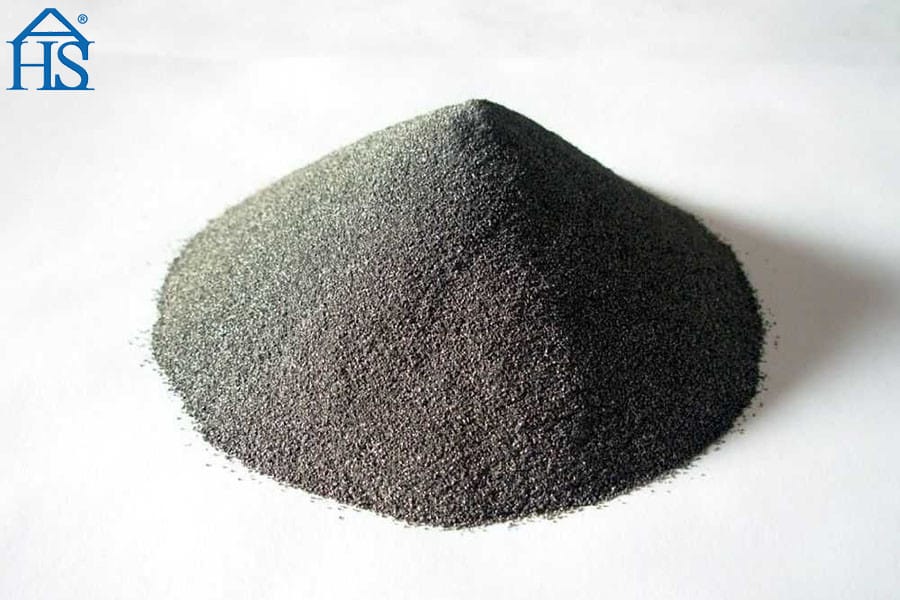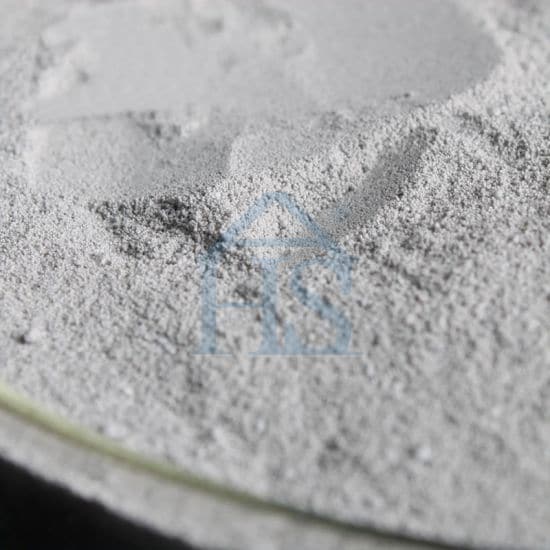The commercial advantages and broad market space of microsilica or silica fume are well-known. As a concrete manufacturer, chances are that you’ve heard both terms and maybe even used them interchangeably.
So you may be wondering “What’s the difference between silica fume and microsilica? Is there even a difference?” Here’s all you should know about silica fume and microsilica.
What is silica fume?
Silica fume is a product of the chemical process involved in the production of silicon or ferrosilicon metal. It is an amorphous silicon dioxide (SiO2) that is generated as a gas in submerged electrical arc furnaces during the reduction of very pure quartz.
It is a very fine amorphous (non-crystalline) silica produced in electric arc furnaces as a by-product of manufacturing elemental silicon or ferrosilicon alloys. A mineral admixture, silica fume is composed of submicron particles (100 to 150 times smaller than a grain of cement) of amorphous silicon dioxide.
Whenever silica fume is used in cementitious applications such as concrete, shotcrete, repair products, and oil well grouts, silica fume acts as both a filler and a pozzolan. A pozzolan is regarded as a siliceous material that generally has very little or no cementitious value.
However, when finely divided, and in the presence of moisture, it reacts chemically with calcium hydroxide at ordinary temperature to form compounds that possess cementitious properties.
As a filler, silica fume improves the physical structure by occupying the spaces between the cement particles. And as a pozzolan, it acts chemically to impart far greater strength and durability to concrete.
Learn More Visit: https://hsamaterial.com/blog/what-is-silica-fume.html
Is there really a difference between silica fume and microsilica?
The only difference between silica fume and microsilica is the name. Both terms refer to the same thing. Silica fume is also known as microsilica, and it is an amorphous polymorph of silicon dioxide. Apart from microsilica, silica fume is also called micro silica, condensed silica fume, and silica dust. So, ‘silica fumes’ and ‘microsilica’ are terms for the exact same product, and they can be used interchangeably.
The uses of Silica fumes vary and cut across various fields where it is used for important work. These fields include:
- Concrete making
- Refractory making
- Polymer industry
- Chemical industry
- Oil well grouting
- Ceramic making
- Rubber applications
Microsilica comes in three forms: powdered microsilica, condensed microsilica, and slurry microsilica.
Silica fume and fumed silica

Although the terms, silica fume and fumed silica look similar, both are very different substances. Although they are both silica dioxide, they have different derivations, applications, technical characteristics, and prices.
Fumed silica (CAS number 112945-52-5) is a finely divided amorphous silicon dioxide particle produced in a flame. Some applications for fumed silica include:
- Coatings
- Sealants
- A filler for rubbers and plastics
- Cement
- Adhesives
Silica fume is generally treated as a better, more effective, and safer alternative to fumed silica. When testing initially began in the 1960s to find applications for silica fume, fumed silica was also tested. However, it was quickly found that silica fume provided better cementitious advantages, and the substance has grown in popularity since then.
Physical and chemical properties of microsilica/silica fume
Silica fume may be light gray or grayish-black in color. Its spherical particles are less than 1μm in diameter and its specific gravity ranges between 2.2 to 2.3. The bulk density of silica fume is based on the degree of densification and varies from 220kg/m3 to above 700kg/m3.
The physical state of microsilica or silica fume is amorphous. Additionally, the surface area of its particles can range from 21 ~23m2/g, when measured by nitrogen absorption equipment.
As for its chemical qualities, silica fume is composed primarily of pure silica in noncrystalline form. It has a very high content of amorphous silicon dioxide and consists of very fine spherical particles. Small amounts of iron, magnesium, and alkali oxides are also found in silica fume.
Application of Silica Fume/Microsilica
You can apply microsilica in concrete in the following ways:
- Blended cement
- Self-Consolidating Concrete (SCC)
- High Strength Concrete (HSC)
- Additive agent for carbon fiber composites
- High-Performance Concrete (HPC)
- Shotcrete
- Ultra-low permeability concrete
- Cementitious repair products
Silica fume, whatever the use, at Henan Superior Abrasives Import & Export Co., Ltd (HSA), we provide high-quality silica fume that meets ASTM C1240 and GB/T18736 -2002.
Effects of the Application of Silica Fume to Concrete
Microsilica is composed of very fine solid glassy spheres of silicon dioxide. In concrete, it improves the strength and durability of the concrete as it provides a more uniform distribution and a greater volume of hydration. Silica fume also reduces the average size of pores in the cement paste.
In addition, microsilica reduces the rate of carbonation and decreases permeability to chloride. As a result, microsilica concrete is able to strongly protect reinforcements and embedded structures from aggressive agents.
When you mix microsilica with concrete, it can improve the properties of both fresh and hardened concrete. And when used as a partial replacement for cement, microsilica can substitute for energy-consuming cement without sacrificing the quality of the mixture.
How microsilica works in concrete

When microsilica is added to a concrete mix, it alters the structure of the cement paste. The effect of this produces significantly more high-strength calcium silicate hydrates and much fewer calcium hydroxides (which are generally weaker and easily soluble).
The microsilica particles are so small and because of that, they can disperse among and separate the cement particles. The result is a fine, uniform matrix that gives higher compressive, flexural, and bond strength. Other effects of microsilica include the following:
- Reducing the rate of carbonation;
- Decreasing the permeability to chloride ions;
- Imparting high electrical resistivity, and has little effect on oxygen transport.
Therefore, microsilica concrete can be expected to be strongly protective, as well as provide durable reinforcement and embedments.
What to consider when mixing and placing microsilica
Proper introduction of silica fume in concrete improves both the mechanical and durability characteristics of the concrete. However, because of its extreme fineness, the use of microsilica can present some handling challenges. These challenges include:
Water demand and workability
Some producers mix microsilica with water on a pound-for-pound basis to form a slurry mixture that is transportable in tank trailers designed to handle liquids. The water of the slurry mixture replaces the part that is ordinarily added to the mix.
In the absence of a water reducing agent, it will typically be necessary to use more water when microsilica is being added to a concrete mix. This is critical to enable the desired slump. Within the first few minutes of adding microsilica to concrete, a gel forms that absorb water and may stiffen the mixture beyond the desired slump. As a result, it is necessary to get the timing of charging and placing absolutely spot on.
The water demand of cement paste increases with the increase in microsilica. Researchers have concluded that cement pastes containing 20–30% microsilica require up to 40% additional water to maintain the workability of the content.
Workability is the ease with which cement pastes and concrete can be placed under the action of gravity. It is largely dependent on the sizes of the particles. Small particle sizes will lead to higher water demand to achieve the same workability.
When there is a high concentration of silica fume in concrete, water demand falls due to a reduction in the contact points between different microsilica grains. This makes it possible to achieve the desired consistency. Additionally, the pozzolanic nature of microsilica reduces the alkali-sulfate resistance.
Setting Time
If you mix microsilica with concrete of equal strength, without a water reducer, the setting time of the mixture will be delayed. However, if you add 15% microsilica with superplasticizer, it delays the setting time by about 60 minutes.
10% microsilica has very little effect on setting times; but with higher percentages (20% microsilica and above), the setting time increases by 6–20%.
We provide high-quality silica fume
For over 20 years HSA Microsilica has built a strong reputation for providing high-quality silica fume to concrete manufacturers and other industry players. With our outstanding technical expertise, we make certain that our silica fume meets production specifications and local standards. We go on to inspect all our products three times before shipping them out.
We supply silica fume both domestically and internationally through our sales and technical support service. We also have a reliable transportation network that helps us meet your delivery needs.
Contact us today to find out how we can meet your production needs. You can ask for a quote here, or contact us to learn more.
Email: sales@superior-abrasives.com
WhatsApp: +86-18638638803
Download PDF: Difference Between Silica Fume and Microsilica





